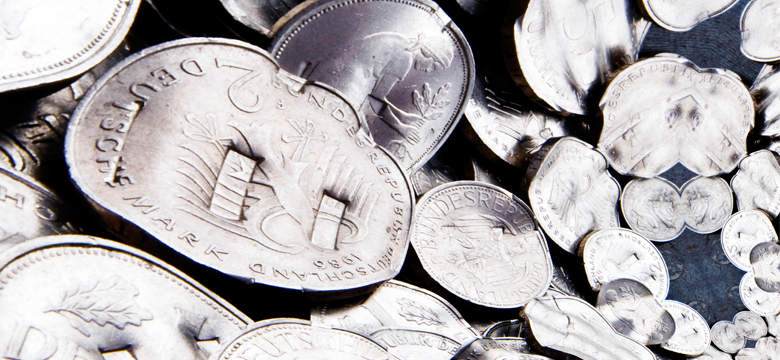Beyond simply the level of wear present on a coin’s surface, there are several characteristics of how each piece is produced that influence its overall appearance and even grade. One such factor is weakness of strike.
In order to fully impress the design of a coin from its cylindrical metal dies onto the planchet, or the smooth metal disc on which the coin is struck, the pressure must be kept at an appropriate level. The exact level of pressure varies depending on the type of metal being used and the coin’s specific design, but the effects of a weak strike or improper striking pressure are clear to both collectors and novices alike.
Areas of “mushy” detail, or lack of detail, are found where the metal of a planchet did not completely fill the crevices of the die. This is especially common on the highest points of a design, such as the area above the ear on a 1921 Peace Dollar or liberty’s head on a Standing Liberty Quarter. In other words, striking pressure is not the only issue that causes a weak strike to be present on a coin; the design itself has often been difficult for the US Mint to produce to its full effect.
As an example, the original design for the Liberty Double Eagle, or $20 gold piece, designed by James B. Longacre was notoriously difficult to produce fully struck. This design, while beautiful, was created with such high relief that the US Mint was later forced to reduce the relief of the portrait. As Chief Coiner of the Mint Franklin Peale wrote in 1849, “It is with extreme regret and after the most earnest endeavors to overcome the difficulty that I am compelled to inform you that the impression upon the new die, for the double eagle, cannot be brought up by the usual coining processes.” As a result of the difficulty that Peale refers to, very few pieces were struck in 1849, and the design was changed to be lower in relief and thus easier to strike.
Weakness of strike was not only an issue in the 1800s, however. In fact, a weak strike is so common on certain types of 20th Century coins that a special grading designation has been created to indicate whether or not a particular coin is fully struck, revealing the details that the designer initially intended. This includes the Full Bands designation for Mercury Dimes, Full Bell Lines for Franklin Halves, and Full Head for Standing Liberty Quarters.
As a discerning collector, one might look for coins that are especially well struck. Although these pieces may not necessarily cost more than a poorly struck piece, the visible result of a strong strike is highly desirable. When produced as the designer intended, the results are simply lovely.
By Sarah Miller
